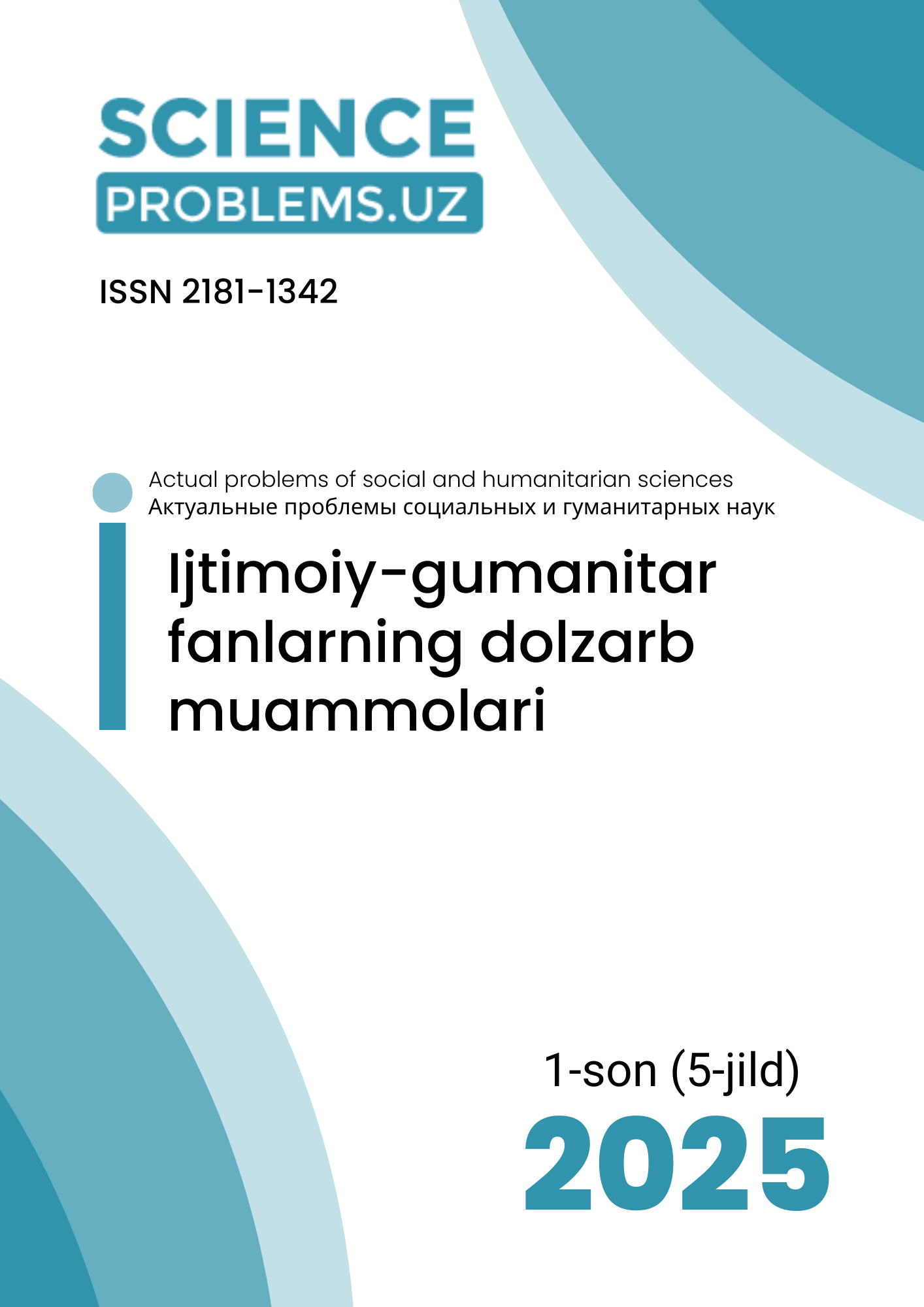INGLIZ VA OʻZBEK TILI SOʻZ BIRIKMALARI STRUKTUR-SEMANTIK XUSUSIYATLARNING QIYOSIY ASPEKTDA OʻRGANILISHI
Kalit so'zlar
https://doi.org/10.47390/SPR1342V5I1Y2025N38Kalit so'zlar
strukturaviy xususiyatlar, semantik xususiyatlar, soʻz turkumi, sintaksis, til qiyoslash, ingliz tili, oʻzbek tili, sintaktik tuzilmalar, soʻz tartibi, hol belgisi, yuklamalar.Annotasiya
Maqola ingliz va oʻzbek tillaridagi iboralarning strukturaviy va semantik xususiyatlarini taqqoslaydi.
Tadqiqot ibora tarkibi, soʻz tartibi, subyekt-feʼl-obyekt strukturalari, holat belgilari va predloglarning ishlatilishini
oʻrganadi. Shuningdek, oʻzbek tilining sintaktik moslashuvchanligi va ingliz tilining qatʼiy tuzilishi oʻrtasidagi
farqlarni tahlil qiladi. Tadqiqot, shuningdek, idiomatik iboralar, frazeologik feʼllar va postpozitsiyalarni qoʻllash
orqali maʼno ifodasini oʻrganadi. Natijalar sintaksis va semantika oʻrtasidagi munosabatni chuqurroq tushunishga
yordam beradi va til oʻrganuvchilariga yangi fikrlar taklif etadi. Bu tadqiqot ikki tilning ibora tuzilishini va
kelajakdagi xoch-lingvistik taqqoslashlar uchun asos yaratadi
Manbalar
1. Khalilov, A. (2020). Syntactic Structures in English and Uzbek: A Comparative Study.
Tashkent: Uzbekiston Press.
2. Mukhitdinov, M. (2018). The Role of Agglutination in Uzbek Syntax and Semantics.
Samarkand: Samarkand University Press.
3. Jumaniyozov, J. (2019). The Comparative Syntax of English and Turkic Languages:
Insights from Uzbek. Tashkent: Akademnashr.
4. Toshpulatov, N. (2021). Idiomatic Expressions in English and Uzbek: A Cross-Cultural
Analysis. Tashkent: Linguistics Research Institute.
5. Yusupov, S. (2017). Language and Culture: A Study of Word Formation and Meaning in
Uzbek and English. Bukhara: Bukhara State University Press.
6. Rahmatov, F. (2022). Case Marking and Postpositions in Uzbek: A Semantic Perspective.
Tashkent: Uzbek Academy of Sciences.
7. Gulyamov, A. (2016). Semantic Shifts and Phrase Structures in Uzbek: A Theoretical
Approach. Tashkent: Tashkent University of Language and Literature.
8. Sharipov, R. (2015). Lexical Semantics and Syntax in Turkic Languages: Comparative
Insights. Tashkent: National Publishing House.
9. Chomsky, Noam. (1995). The Minimalist Program. MIT Press.
10. Greenberg, Joseph H. (1963). Some Universals of Grammar with Particular Reference to
the Order of Meaningful Elements. In Universals of Language, ed. by Joseph H. Greenberg,
73–113. MIT Press.
11. Kovács, László. (2010). The Syntax of Turkish and the Syntax of English. Linguistics 48(3),
573-602.
12. Azimov, A. (2015). Case and Word Order in Uzbek Syntax. Journal of Central Asian
Linguistics, 22(1), 45-67.
13. Bach, Emmon. (2000). Boundaries and Flow: Syntactic and Semantic Constraints in
Language Structure. Syntax and Semantics, 30(1), 1-23.
14. Wierzbicka, Anna. (1996). Semantics: Primes and Universals. Oxford University Press.








